Performance Form
-
Number of Performers: Hot Me Cuo performances have no limit on the number of participants, ranging from a dozen to several hundred people.
-
Performance Style: Participants hold hands and form a circle around a bonfire, singing and dancing in a clockwise direction. Men chant “wo re re” while women respond with a trembling voice singing “ai he he.”
-
Dance Movements: The dance movements are simple, natural, bold, and unrestrained, imitating the front legs bending and stretching downward during a sheep fight, with hands pulling each other or holding shoulders.
-
Musical Characteristics: The music is a natural sound from the chest and throat, without instrumental accompaniment or rules of scales and melodies. Men’s parts are led by the “Zuo Luo Ba” (male lead singer), and women’s parts by the “Re Le Mei” (female lead singer). The polyphonic parts are balanced between strength and softness, forming a primitive and beautiful dissonant harmony.
Cultural Connotations
-
Primitive Beliefs: Hot Me Cuo retains the traditional folk art characteristics of the Naxi people, reflecting their reverence for nature and belief in unity for survival.
-
Social Functions: This form of song and dance is not only for entertainment but also plays an important role in funeral and other ceremonies, believed to dispel evil spirits and guide the souls of the deceased back to their ancestors’ home.
-
Cultural Heritage: Hot Me Cuo is passed down through oral teaching and personal experience. Learners need to be exposed to it from a young age and practice for a long time to master the skills.
Heritage and Protection
Modern Development
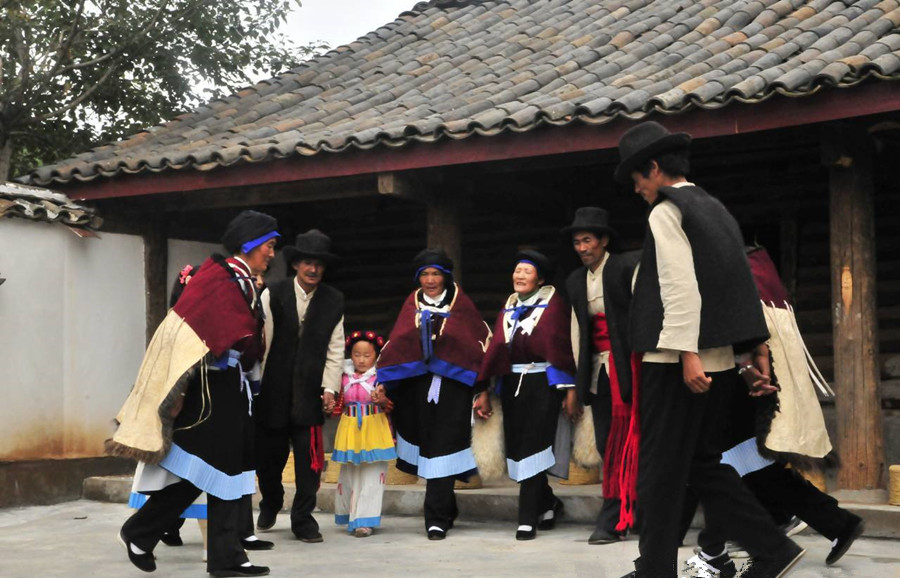
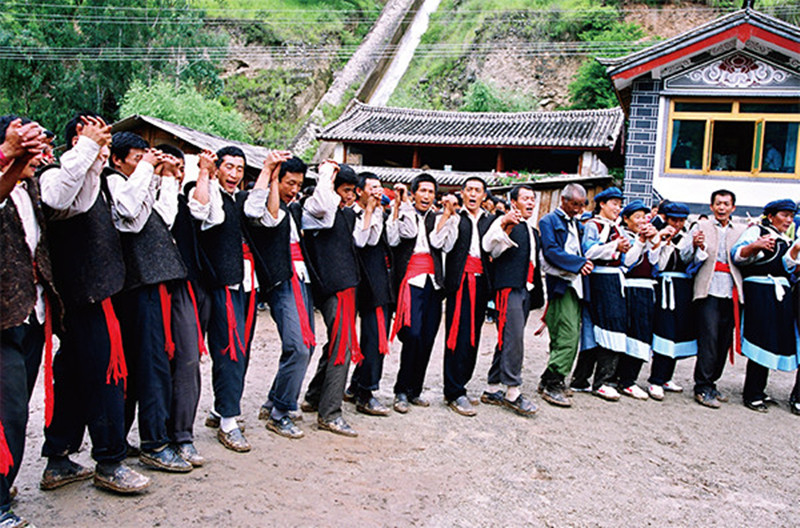
Hulusi ( Cucurbit Flute) of Lianghe County, Dehong 梁河县葫芦丝

http://www.ynich.cn/view-ml-11111-1205.html
Ruili City – Hometown of Peacock Dance 瑞丽市孔雀舞之乡

http://www.ynich.cn/view-ml-11111-1206.html
Funing Zhuang Opera is a unique traditional theatrical form originating from (富宁县) Funing County in (文山州) Wenshan Prefecture, Yunnan Province, and is recognized as a national intangible cultural heritage. It has a long history, first emerging in the (者宁) Zhening area of Funing County. The opera is based on the folk songs of the Zhuang ethnic group. Below are the main characteristics and related information about Funing Zhuang Opera:
Characteristics
Vocal Styles and Schools
Funing Zhuang Opera has four major vocal styles: “Ai Yi Ya,” “Ai Yi Nong,” “Guai Hai Lie,” and “Yi He Hai,” which are also referred to as the four main schools of the opera.
Accompaniment Instruments
The instruments used for accompaniment include the Ma Gu Hu, Ban Hu, Hu Lu Hu, and bamboo flutes without membranes, among others.
Script and Lyrics
The scripts are written in Han characters, but the Zhuang language is used for the lyrics, often in a five-character narrative poem format. The lyrics and dialogue are performed in the Zhuang dialect, which gives audiences a strong sense of familiarity and connection.
Performance Content
The content of the performances is mainly drawn from ethnic historical legends, Han Chinese romance novels, Han folk songs and ballads, and local folktales.
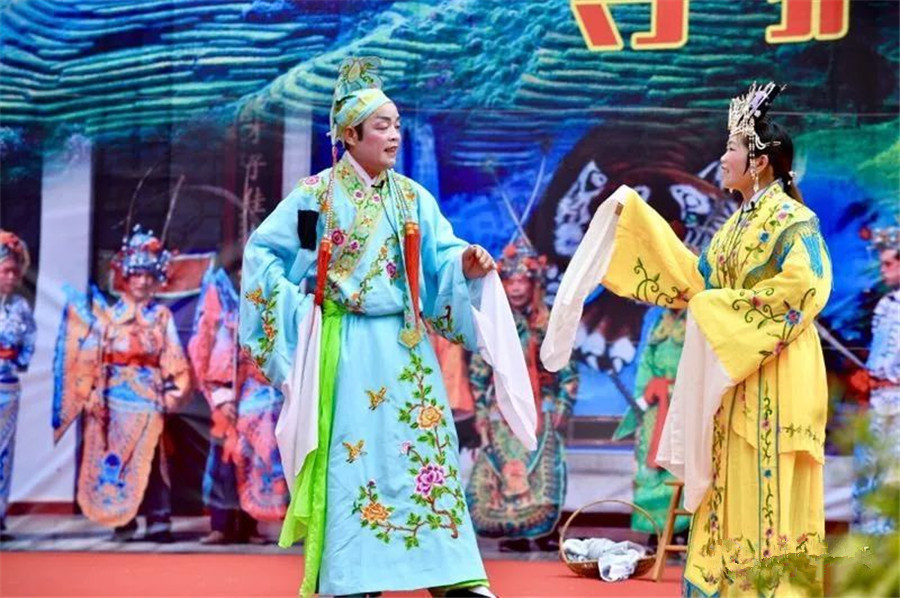
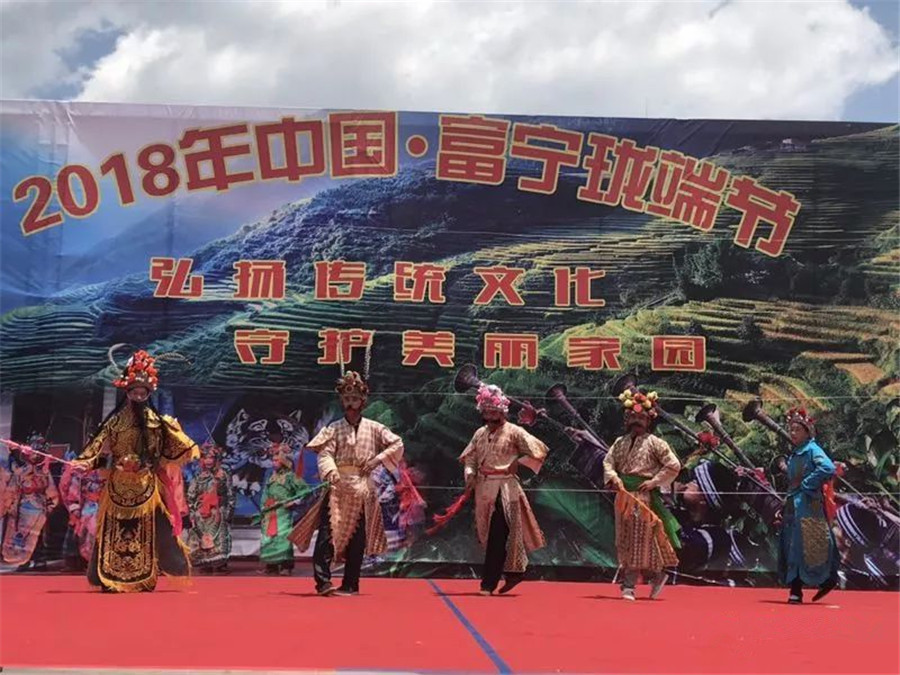
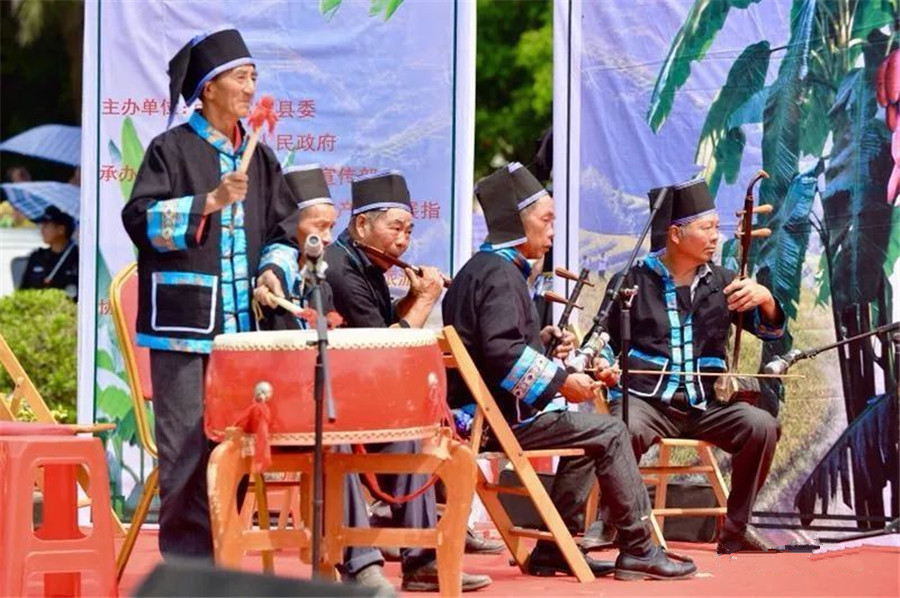
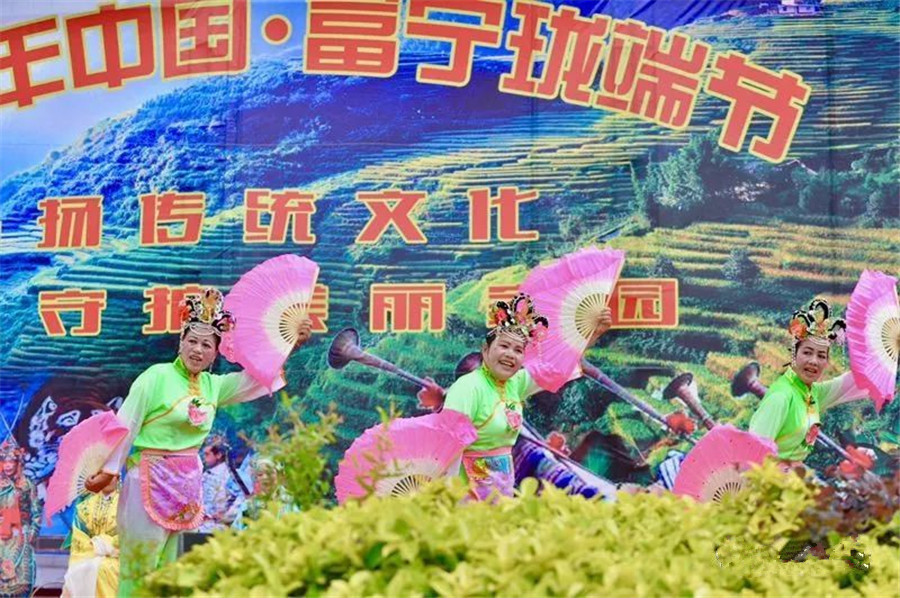
Representative Works
“The Snail Maiden”
This is one of the most representative works of Funing Zhuang Opera, based on a folk legend popular among the Zhuang people in Funing County. The play portrays the struggle between the Snail Maiden and a local chieftain, showcasing themes of “truth, goodness, and beauty” and “justice triumphing over evil.” The opera seamlessly combines “Zhuang Opera” and “Po Ya Love Songs,” showcasing the unique performance style of Zhuang Opera and its enduring charm.
“Changing the Wine for Cattle”
This play was selected for the first “China Traditional Opera Rare Genres Excellent Performance Exhibition.” It demonstrates the artistic charm of Funing Zhuang Opera.
Development History
Early Development
Funing Zhuang Opera was formed during the Daoguang period of the Qing Dynasty. The early form was “Danfen” (singing with lyrics), which gradually evolved into “Bencheng Drama” (seated performances by several singers), and later developed into a multi-act play.
Post-New China Establishment
In 1954, the first opera troupe was established in Funing County. In 1958, the first Zhuang Opera performance was held in Funing County with more than 100 performers. By 1959, there were over 150 Zhuang opera troupes in the county, with more than 8,000 actors.
Modern Development
In 2022, the Wenshan Prefecture Zhuang Opera Troupe presented an innovative third version of the grand Zhuang opera “The Snail Maiden” at the Funing County Ethnic Sports Stadium, which received a strong response.
Cultural Value
Funing Zhuang Opera is not only an important part of Zhuang culture but also a valuable heritage of traditional Chinese theater. It incorporates rich folk literature, music, dance, and acrobatics, reflecting the Zhuang people’s way of life, historical legends, and spiritual world.
If you are interested in Funing Zhuang Opera, you can watch related performance videos such as “The Snail Maiden” and “Changing the Wine for Cattle” to gain a deeper understanding of this unique art form.
Modern Innovations
1. Innovation in Repertoire
“The Snail Maiden” Third Version
In 2022, the Wenshan Zhuang Opera Troupe created an innovative third version of the grand Zhuang opera “The Snail Maiden.” The script was revised to better align with modern aesthetic standards, enhancing the plot and adding more dramatic effects. The music combined two national intangible cultural heritages, “Zhuang Opera” and “Po Ya Love Songs,” achieving a perfect fusion.
“Zhuang Embroidery Romance”
In 2021, the Funing County ethnic cultural team created a small play called “Zhuang Embroidery Romance,” which blends elements of Zhuang Opera, Po Ya Love Songs, and Zhuang embroidery. It tells the story of a “male embroiderer” whose life is intertwined with embroidery. The play received praise from both experts and audiences.
2. Innovation in Performance Style
On-site Performances
Drawing inspiration from successful cases like “Impression Liu Sanjie,” on-site performances are held at locations where the stories take place, combining Funing’s beautiful natural scenery and rich history and culture. These performances attract a large number of tourists, enriching their understanding of Zhuang Opera and its cultural significance.
Multimedia Technology
Multimedia technologies, such as lighting, sound effects, and stage designs, are incorporated into performances to enhance visual and auditory experiences, providing the audience with a more immersive experience.
3. Innovation in Themes
Modern Themes
Modern themes like “Encouraging Learning” (劝学) have been created in Zhuang Opera, using simple language and authentic emotions to depict the heroic image of a teacher dedicated to rural education and a village student’s struggle to achieve their dreams. Traditional theatrical forms with ethnic characteristics are used to promote educational policies and poverty alleviation efforts.
Revolutionary History Themes
Works like “The Baise Uprising” (百色起义) combine local revolutionary history with ethnic opera, employing film and drama techniques. The story unfolds through a layered narrative that intertwines “spirit-time” and “historical-time,” representing a positive exploration of revolutionary history in opera.
4. Cultural Exchange and Cooperation
Multi-troupe Exchanges
On February 18, 2025, the first “Longduan Festival” cultural performance was held in (新华镇) Xinhua Town, (各甫村) Gefo Village, Funing County. The event gathered 16 troupes, including the Dongbona Ha troupe and Guichao Mengcun troupe, featuring a variety of traditional and new plays, dances, and more. This exchange event not only promotes learning and cooperation among different troupes but also injects new vitality into the inheritance and development of Zhuang Opera.
5. Inheritance and Education
School Education
Through partnerships with schools, Zhuang Opera has been integrated into the school arts education system. The “Zhuang Opera into Campus” initiative is being implemented to cultivate a younger generation’s interest and love for Zhuang Opera.
Community Activities
Zhuang Opera performances and educational activities are organized in communities, providing more opportunities for people to learn and experience the opera, thereby strengthening community residents’ recognition of traditional culture.
Through these innovations, Funing Zhuang Opera has enriched its content and performance styles, playing an important role in the inheritance and protection of this intangible cultural heritage.
For Chinese version please go to:
http://www.ynich.cn/view-ml-11111-1210.html
The Bronze Drum Dance (文山壮族、彝族铜鼓舞) is a traditional dance form from the Wenshan Zhuang and Miao Autonomous Prefecture (文山壮族苗族自治州) in Yunnan Province, recognized as one of China’s National-Level Intangible Cultural Heritage items.
This ancient dance is widely practiced among the Zhuang and Yi ethnic groups in Wenshan, particularly in counties such as Guangnan (广南), Malipo (麻栗坡), Funing (富宁), Xichou (西畴), Maguan (马关), and Qiubei (邱北). The most representative styles are found in Guangnan’s Zhuang and Yi communities, as well as among the Yi Bai Luo subgroup in Malipo’s Xinzhai Township (麻栗坡县新寨乡) and Funing’s Muyang Township (富宁县木央乡).
On May 20, 2006, the Bronze Drum Dance was officially listed in the first batch of China’s National Intangible Cultural Heritage (Project No. Ⅲ-26).
Historical Origins
Archaeological discoveries in Guangnan include bronze drums dating back to the Spring and Autumn and Warring States periods, such as the Shaguo Drum (沙果鼓), which is over 2,000 years old. Bronze drums have long symbolized power, served as ritual objects for warding off evil and praying for blessings, and functioned as sacred musical instruments.
The dance originated from the Zhuang and Yi ancestors’ worship of nature and ancestors. The Yi people believe bronze drums embody the spirit of all things, and dancing to their rhythms conveys human wishes to heaven and ancestors. The Zhuang, meanwhile, view the dance as a way to expel evil spirits and pray for communal peace.
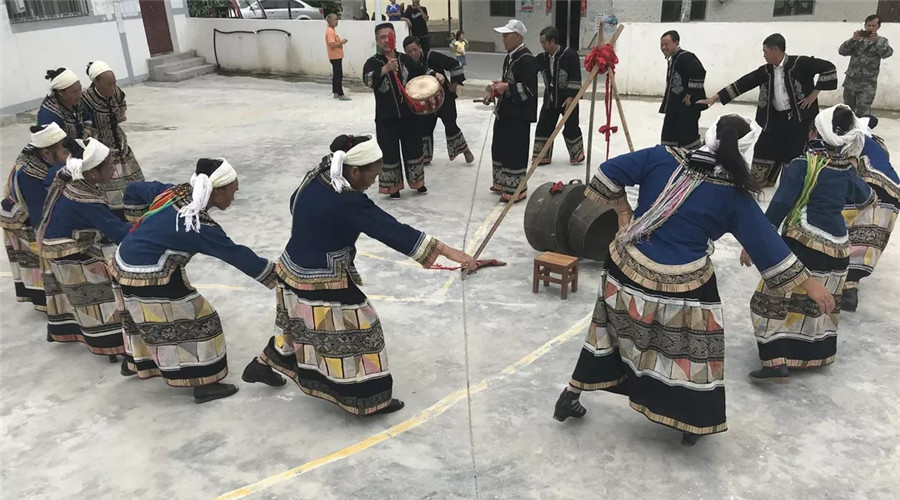
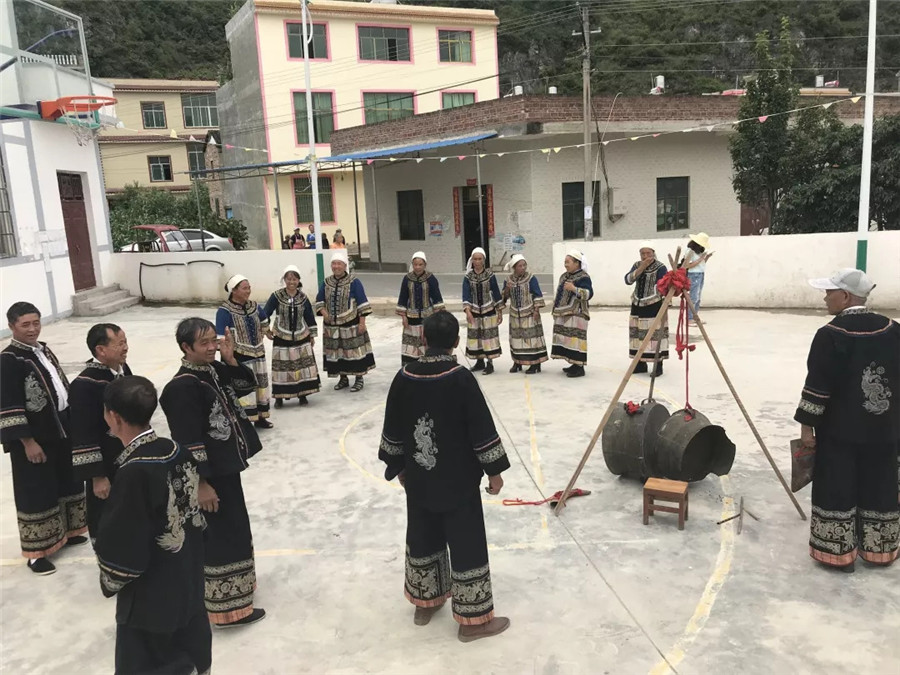
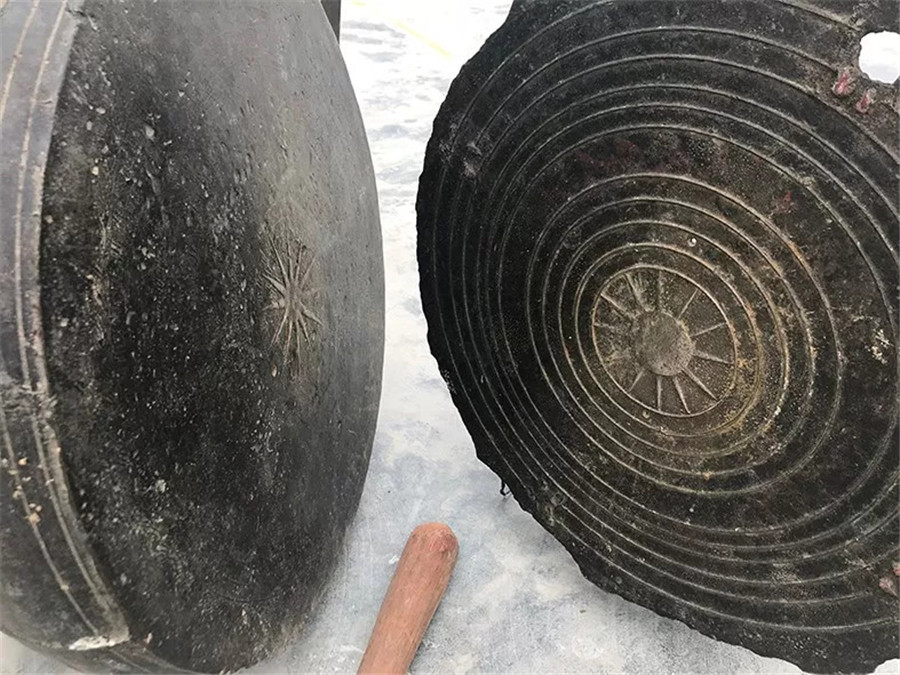
Dance Characteristics
The Bronze Drum Dance is a collective ethnic dance performed in a circle, with dancers moving counterclockwise to the drumbeats. Each set of movements reflects agricultural and daily life activities of the Zhuang and Yi people.
- In Guangnan’s Nasa Town (那洒镇), the Zhuang community in Magui Village (马贵村) preserves 12 complete dance sets, each representing a different month of the farming year.
- In Malipo and Funing, the dance is performed for rituals such as rain prayers, harvest celebrations, and funerals.
- The Zhuang style features a unique musical technique: one performer strikes the bronze drum while another uses a wooden box to create resonant glissando effects.
- The Yi style involves 12 tonal combinations played on paired “male” (representing the sun) and “female” (representing the moon) drums, symbolizing the 12 months of the year and reflecting their calendrical traditions.
The dance embodies the Zhuang and Yi peoples’ natural and ancestral worship, showcasing rich historical, cultural, and artistic value.
Safeguarding and Transmission
Cultural Significance
The dance is a crystallization of Zhuang collective wisdom and a dynamic art form that has been passed down orally and through practice for centuries.
Current Challenges
Due to external cultural influences, younger generations of Zhuang and Yi people lack deep engagement with this tradition, leading to a decline in practitioners. Without urgent preservation efforts, the dance risks disappearing.
Representative Inheritors
- Liang Zhenggong (梁正功), male, Zhuang ethnicity, national-level inheritor.
- Huang Zhengwu (黄正武), male, Yi ethnicity, national-level inheritor.
- Lu Xiaozong (陆孝宗), male, Yi ethnicity, national-level inheritor.
Protection Measures
- On October 31, 2023, the Wenshan Intangible Cultural Heritage Protection and Art Research Center (文山壮族苗族自治州非物质文化遗产保护和艺术研究中心) was confirmed as the competent safeguarding body.
- The dance was featured in the 2025 Intangible Cultural Heritage Gala on February 1, 2025.
Social Impact
Key Events
- On February 22, 2012, Guangnan County established a demonstration site for the dance in Guima Village (贵马村).
- On November 19, 2023, Funing County hosted a cultural exhibition showcasing the dance and Lusheng (芦笙) traditions.
For Chinese version please go to:
http://www.ynich.cn/view-ml-11111-1211.html
The news was updated on May 22, 2019.
Quzonggong, literally a place where two rivers meet, is located in the northernmost area of Baima Snow Mountain National Nature Reserve in northwest Yunnan. Now, in April, it is getting verdant after a long cold winter.
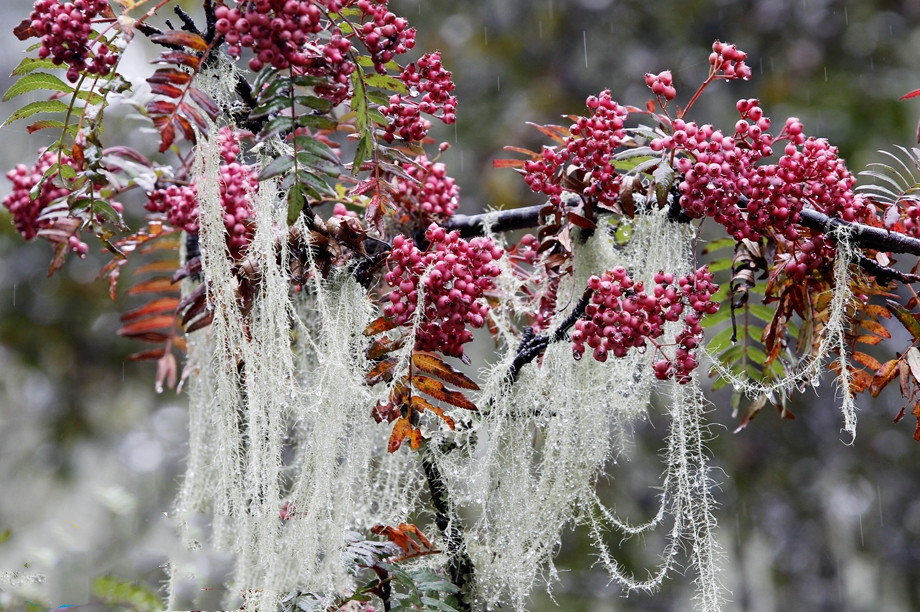
“Here we have not only Yunnan snub-nosed monkeys but also leopards,” said our guide Tibu, a ranger of the Baima Snow Mountain National Nature Reserve.
Along the way, the rivers, meadows and forests were serene and peaceful, and we occasionally saw monkeys jumping from branch to branch. “Many people live in the vast nature reserve and the roads extend in all directions, increasing difficulty of protection,” said Tibu. In Quzonggong, there used to be fewer than a dozen rangers. Patrolling on foot, they could only cover a small area every day.
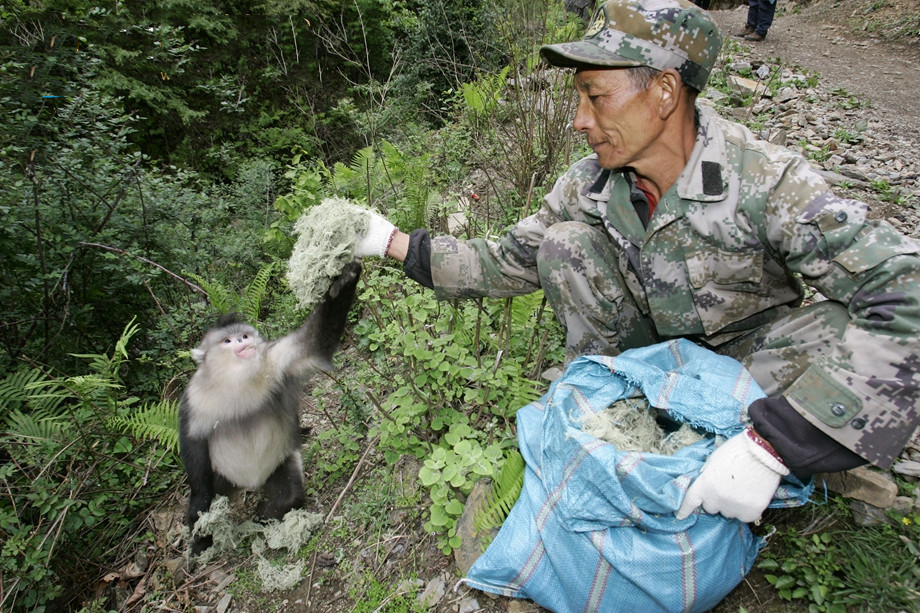
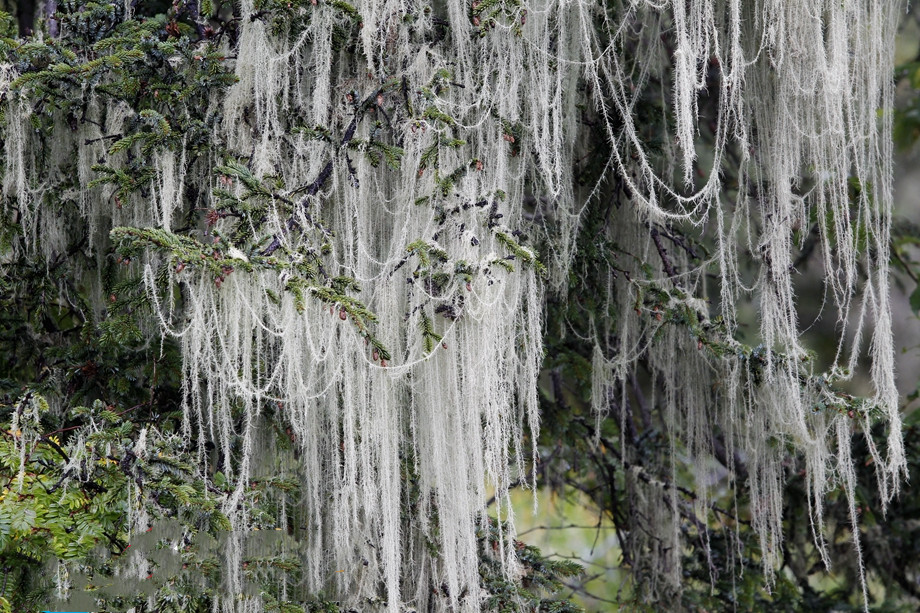
In 2011, the nature reserve began to adopt infrared cameras to monitor the roads where there are dense vegetation and more wildlife and human activities. Over the past seven years, with the help of infrared cameras, Tibu has captured a variety of wildlife and their activities. He has even taken some photos and videos of rare animals such as sambar deer and leopards for the first time.
The activities of leopards and other national first-class protected animals in the nature reserve indicate that the protection of wildlife has been improving here. “The technology helps, but we must rely on the public to prevent poaching.” In Cikatong, Tibu and his colleagues help the villagers do farm work in their spare time and lend hands to the needy.

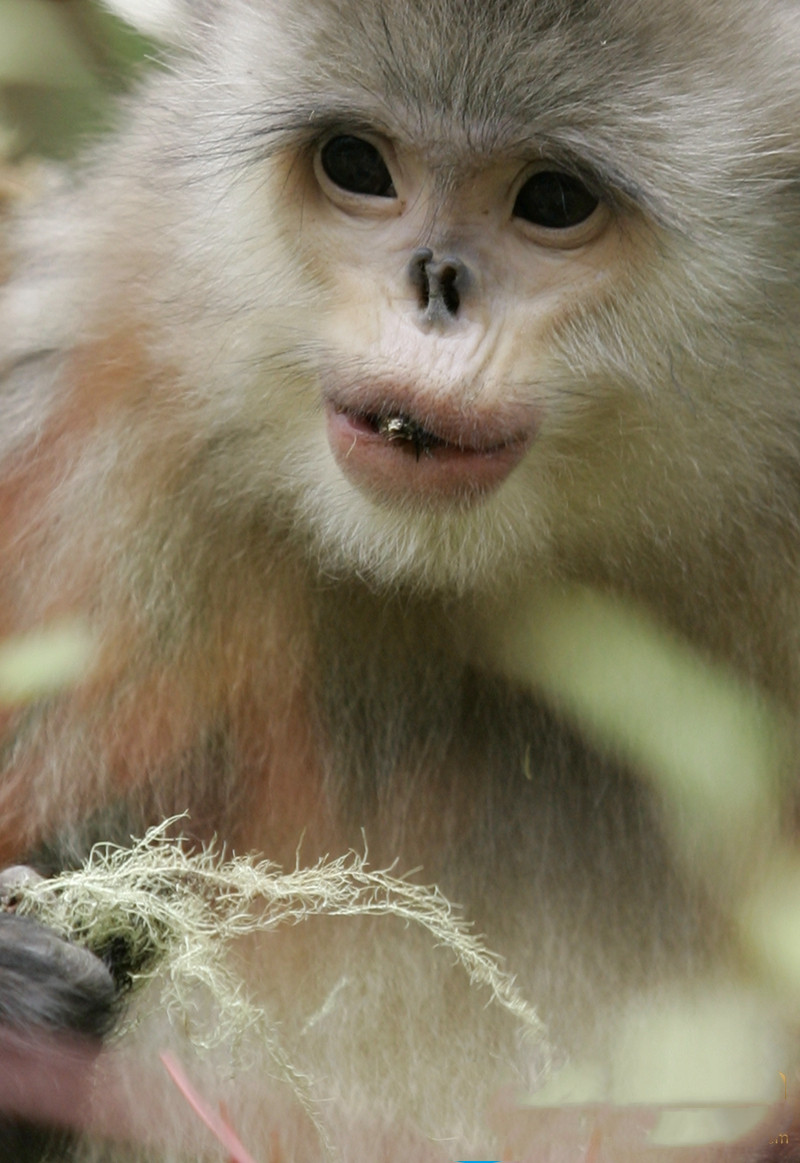
Here the villagers live on separate hills. Albeit it takes a long time to go from one hill to another, Tibu never turns down the request of any villager and is almost always on the mountain road. In the past five years, he has paid over 5,000 visits to the villagers’ houses, helping them raise domestic animals in a scientific manner and solve other problems for them.
“Tibu is so kind. How can I have the heart to poach?” said a villager by the name of Dengba. Thanks to Tibu’s efforts, poaching and illegal logging reduced significantly in Cikatong. Now most of the villagers treat the nature reserve as their own home and actively improve the local living conditions and ecosystems.
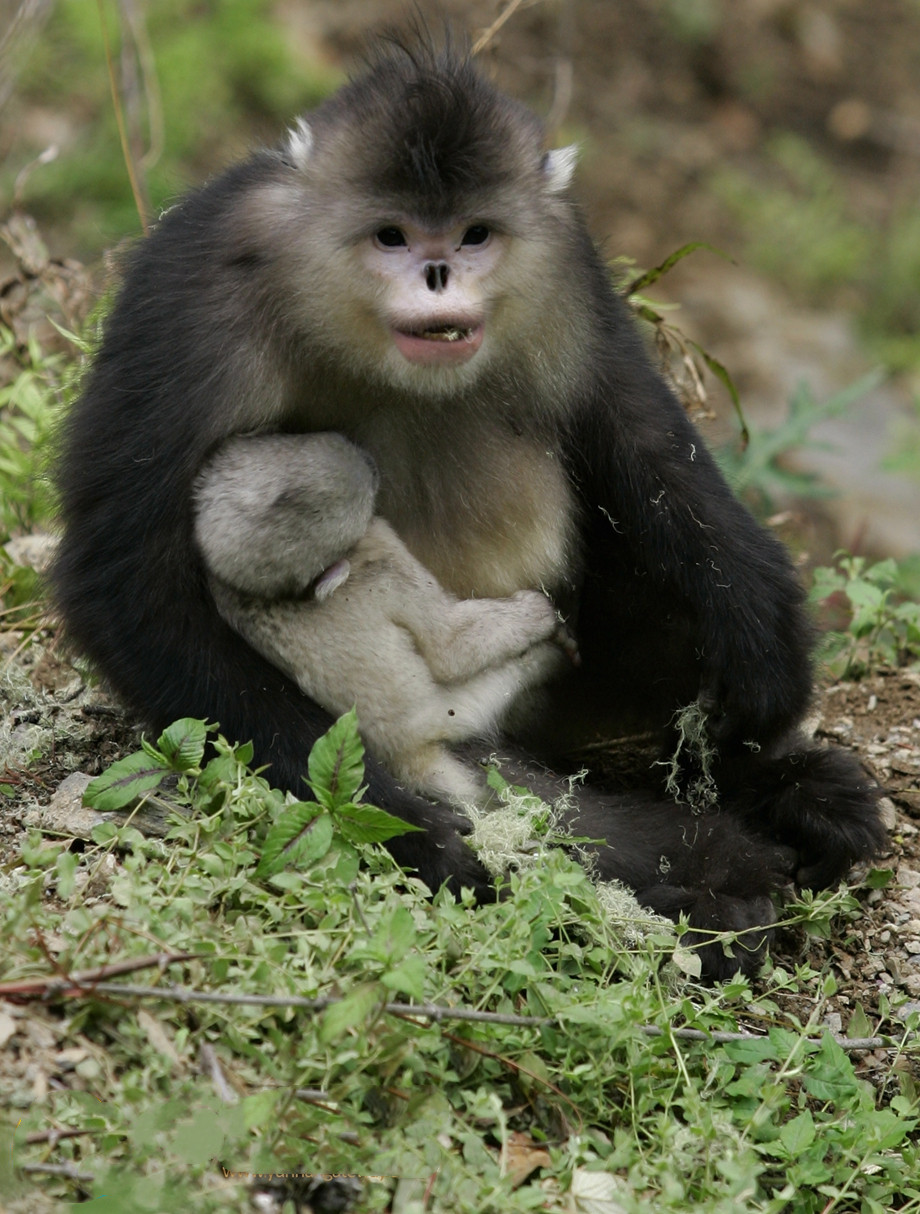
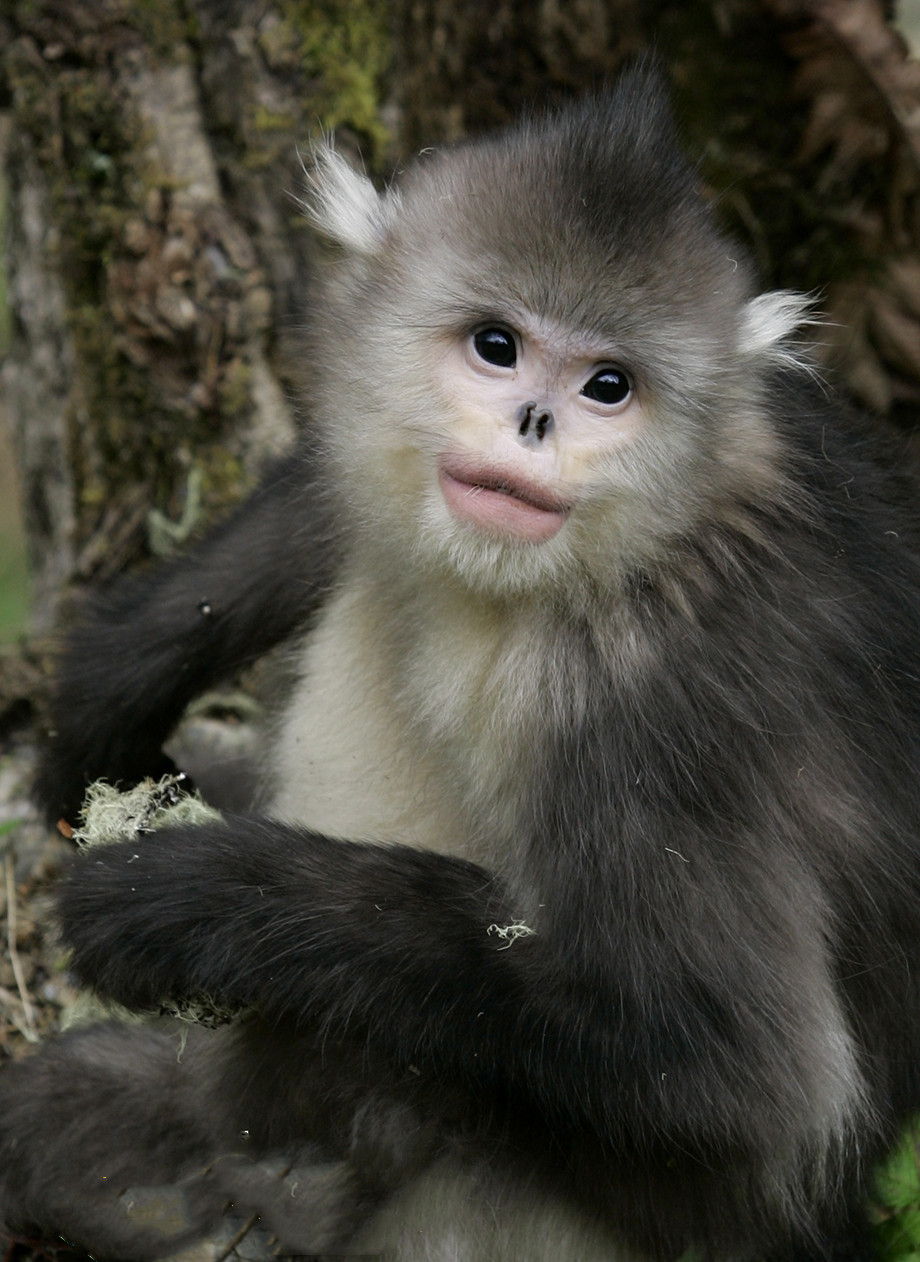
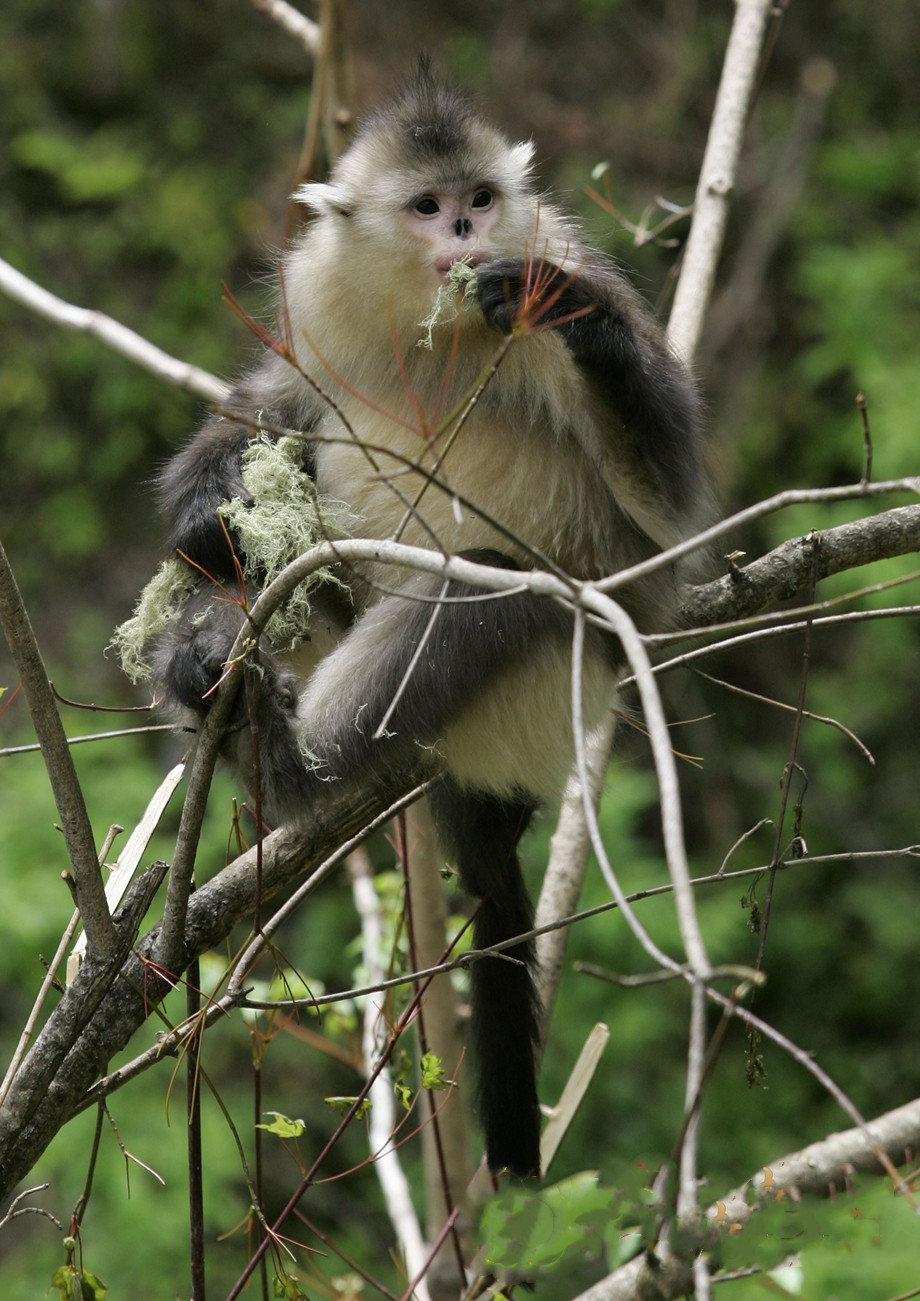
Laohusheng Dance of Yi Ethnic Minority in Shuangbai County, Chuxiong 双柏县彝族老虎笙舞
Laohusheng Dance: Tiger Dance Festival of Yi Ethnic Minority
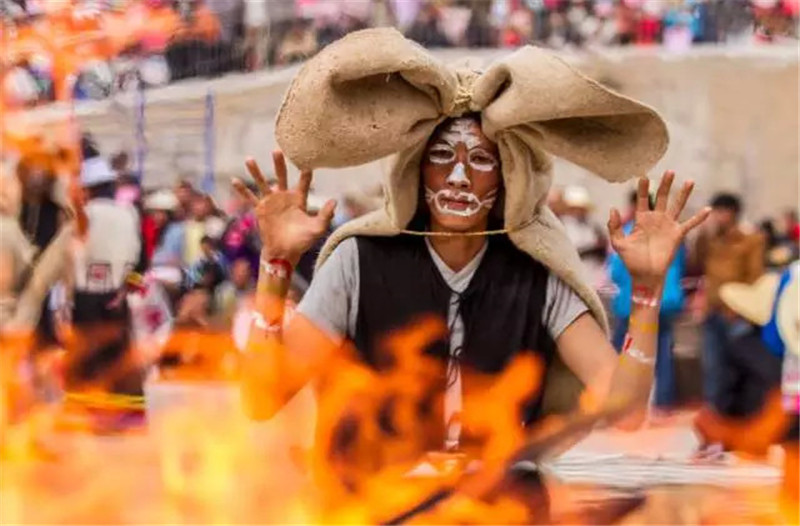

http://www.ynich.cn/view-ml-11111-1203.html
Introduction to Yanglao Drum Dance
The Yanglao Drum Dance (秧老鼓舞), a traditional performance form originating in Jinning District (晋宁县), Kunming (昆明), is a significant cultural symbol of the Yi (彝族) ethnic minority. The performance features dancers holding a white towel in their left hand, swinging it up and down, while striking a drum with a wooden stick (approximately 0.25 meters long) in their right hand. The tail of the drumstick is adorned with a square red silk scarf.
Characteristics of the Dance
The leader of the dance, known as the “Longtou” (龙头), holds a specially crafted dragon-shaped head, typically made from 0.6 to 0.7-meter-long ash wood. Forest cock feathers are placed on the dragon’s head, with a decorative red silk tie. The dance is accompanied by various percussion instruments, such as large and small gongs and cymbals. The performance includes over 20 different sequences, such as circle dancing, crossing flowers, stepping on stairways, back-to-back formations, facing each other, the snake’s shedding skin, and prayers for wealth and respect for the four directions. The rhythms alternate between fast and slow beats, with intricate movements such as leaps, T-step walks, leg-kicks, and spins, all coordinated by subtle waist and hip movements.
Historical Development
From the late 1980s to the 1990s, local amateur drama associations were established, leading to the creation of over 70 Yanglao drum teams across various towns, including Baofeng (宝峰), Zhonghe (中和), Kunyang (昆阳), and Erjie (二街), with more than 1,300 members. In July 1992, to commemorate the 587th anniversary of Zheng He’s voyage to the Western seas, over 100 performers from Yanglao drum teams in Shuanghe (双河) and Xiyang (夕阳) received high praise for their performance at an international event.
At the First Kunming International Export Commodities Fair, the Yanglao drum dance was showcased by youth groups from Shuanghe and Xiyang. The performance at the opening ceremony of the 9th Yunnan Provincial Games in 1999, titled Yanggu Cuichun (秧鼓催春), featured 400 Yi youth from Shuanghe, Xiyang, and Erjie, impressing the audience with its ethnic charm, majestic presence, and artistic form.
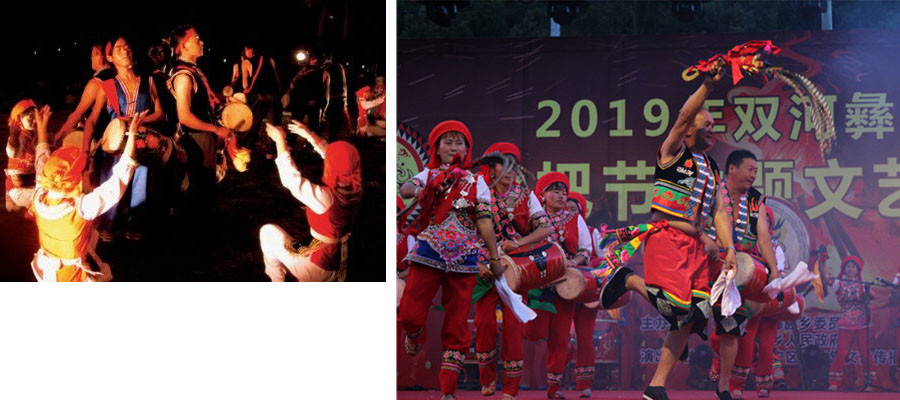
Cultural Significance and Evolution
The Yanglao Drum Dance has become an integral part of local festivities in Shuanghe Yi Township, especially for weddings, funerals, and various ethnic celebrations. During traditional holidays, the people of Shuanghe perform the dance to express their love for life and their hopes for a better future.
Shuanghe Yi Township has taken significant steps in preserving and innovating Yi traditional culture. Since 2014, local schools have incorporated the Yanglao drum dance into their curriculum, where it is featured in “special big recesses” alongside Yi embroidery. This initiative has helped local children learn traditional dances while engaging in physical activity. Currently, over 60 Yanglao drum teams operate in the township, and monthly cultural performances called Yi Township Art Rhythm, Harmonious Shuanghe are organized at the Ethnic Culture Plaza.
Preservation and Innovation
Shuanghe Township has established a long-term mechanism for the protection and transmission of ethnic culture, led by the government and supported by various departments and community participation. The township has developed a “dynamic” and “static” approach to protecting the Yanglao drum dance, ensuring its continued relevance. Efforts have been made to collect materials such as photos, videos, and CDs, and to preserve intangible cultural heritage.
In 2019, Shuanghe Township collaborated with the Jinning District Culture and Tourism Bureau and the Jinning Cultural Center to produce a teaching video and publish the book Jinning Yanglao Drum. These efforts aim to enhance the artistic value of the dance and lay a strong foundation for future cultural transmission.
Cultural Festivals and Recognition
Shuanghe Township actively promotes ethnic culture through various festivals, including the Spring Festival, Lantern Festival, and Mid-Autumn Festival, with regular Yanglao drum dance performances. The township also celebrates its unique Fire Torch Festival and Street Dancing Festival. These events attract attention from both the public and the media.
In 2006, the Yanglao drum dance was included in the first batch of Yunnan Province’s intangible cultural heritage list. The dance gained national recognition through its participation in Central Television’s East, West, South, and North New Year Celebration in 2018. In 2019, three teams participated in the Jinning District competition for the 70th anniversary of the founding of the People’s Republic of China, winning one gold and two silver awards.
Through these performances and exchanges, the idea of “building a brand and promoting cultural outreach” has become ingrained in the community. The Yanglao drum dance has become one of Shuanghe’s most distinctive cultural symbols, continuing to shine locally and internationally.
For further information, visit the original article.
Overview of Yi (Sani) Embroidery
Yi (Sani) embroidery, also known as “Sani Cross-Stitch” or “Sani Tiao Hua” (撒尼挑花), is a folk embroidery art that originates from the Sani people living in Shilin Yi Autonomous County in Yunnan. The Sani people belong to a branch of the Yi ethnic group, and their embroidery art has been passed down through generations. It is believed to have originated in the Tang and Song dynasties and matured during the Ming and Qing dynasties.
This embroidery is characterized by its fine stitches, exquisite craftsmanship, clever design, harmonious structure, and vibrant colors. It showcases the intelligence and artistic creativity of the Sani people, reflecting distinct ethnic styles and local features.
On June 7, 2008, Yi (Sani) embroidery was included in the second batch of China’s national intangible cultural heritage list by the State Council of the People’s Republic of China, with heritage number VII-78. On May 15, 2018, it was also included in the first batch of the National Traditional Craft Revitalization Directory.
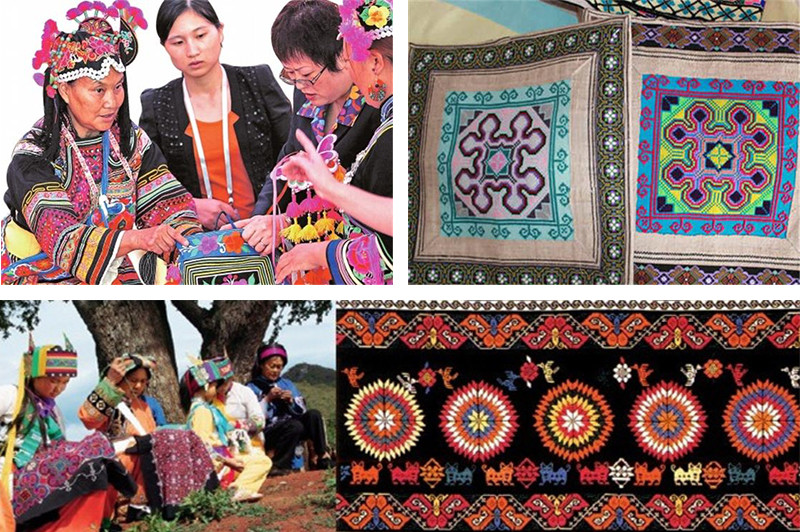
Historical Origins
Sani embroidery, also referred to as “Sani Tiao Hua” in the Sani language (meaning “unfinished embroidery”), is believed to have originated in the Tang and Song dynasties and became more refined during the Ming and Qing dynasties. It is mainly practiced by Sani women in towns such as Guishan, Changhu, Xijiekou, Lumei, Lufu, and Banqiao in Shilin County, as well as in neighboring areas like Luxi County, Mile County, Luliang County, Yiliang County, and Qiubei County in Wenshan Zhuang and Miao Autonomous Prefecture.
Before the Reform and Opening-up, Sani embroidery was mostly produced for personal use, and few items were sold as commodities. In the late 1980s, with the growth of tourism in Shilin, both domestic and international tourists began to buy Sani embroidery. This demand led to a small number of Sani women seizing the opportunity to sell various products like wallets, handbags, wall hangings, waistbands, and cushions, opening a new avenue for the Sani people to engage in the market economy.
As the manual embroidery process is time-consuming, it became difficult to meet market demand with handcrafts alone. Consequently, Sani embroidery transitioned from traditional home-based production to factory-based mass production, incorporating modern assembly-line processes.
Cultural Features
Embroidery Patterns
Traditional Sani embroidery patterns can be broadly divided into three categories:
- Geometric Patterns: These are primarily cross-stitch designs, with a degree of abstraction. Notable examples include the “three-string flower,” “octagonal flower,” “copper coin flower,” “sunflower,” “sheep horn flower,” “butterfly flower,” “pomegranate pattern,” “frog pattern,” “tree pattern,” “dog tooth pattern,” “fern pattern,” “flame pattern,” “jumping pattern,” and simple geometric shapes like diamonds, triangles, and stripes.
- Floral Patterns: These are mainly executed in flat stitch, showcasing delicate and realistic techniques. These designs often draw inspiration from common flowers like lotus flowers, pomegranate flowers, azaleas, and camellias.
- Cut-out and Attached Flowers: These patterns are more abstract and bold, with examples including cloud patterns and wave patterns.
Pattern Compositions
Sani embroidery is usually composed of two main types of patterns:
- Square or Circular Patterns: These designs are simple and symmetrical, often featuring a complete three-string flower or octagonal flower pattern in the center, with surrounding stripes like sheep horn patterns and diamond shapes. These patterns are commonly found on smaller items such as waistbands and backpacks.
- Long, Repeating Patterns: These intricate designs typically feature larger floral motifs like the three-string flower or octagonal flower. The patterns are formed by repeating elements arranged in a circular manner, expanding outward. The design is often more complex and intricate, appearing on larger items such as tablecloths or wall hangings.
Color Matching
Sani embroidery typically uses simple, bright colors for the base fabric, such as black, deep blue, or white, with occasional use of other colors like yellow or red. There are two main styles of color matching:
- Vibrant Style: This uses contrasting colors of silk thread, such as black, yellow, green, red, blue, white, and cyan, creating strong contrasts and vibrant, eye-catching patterns.
- Elegant Style: This involves using a single color of silk thread on a solid-colored fabric to create a subtle, refined effect. An example is the use of black fabric with white thread, a style known as “Su Tiao,” where the stitching is simple yet elegant.
Embroidery Techniques
Sani embroidery is known for its focus on “challenging” stitches, using a mix of techniques such as cross-stitch and flat stitches. It involves two primary methods:
- Cross-Stitch (十字绣): This technique uses the “X” shape as the basic unit. The fabric is woven in clear, vertical and horizontal lines, and four adjacent points are joined diagonally with colored thread to form a tilted “X.”
- Single Stitch (一字绣): This technique uses the “I” shape as the basic unit, where the thread follows the horizontal lines of the fabric, creating continuous lines of “I” shapes to form the pattern. It is commonly used in smaller decorative items like waistbands and handbags.
In addition to these, techniques like “inserted flower” stitching (顺针平绣) and cut-out flower applique (镂空贴花) add depth and texture to the embroidery, allowing for more creative and complex designs.
Production Process
The creation of Sani embroidery involves three main steps:
- Fabric Cutting: The fabric is cut according to the size and shape required for the embroidery. The base fabric pieces are referred to as “embroidered pieces” (绣片).
- Embroidery: The embroidery is done following the design, starting from the central motif and expanding outward. The threads are carefully stitched, filling in different color blocks. For more complex designs, multiple layers of embroidery are stitched on top of each other.
- Finishing: This step involves edge finishing and joining multiple embroidered pieces together to create the final product. Depending on the design, the edges may be adorned with tassels, or several pieces may be stitched together into a larger artwork.
Preservation and Inheritance
Value of Inheritance
Artistic Aesthetic Value: Sani embroidery carries deep emotional significance, reflecting the love for nature and the aspiration for a beautiful life. The patterns are symbolic of the Sani people’s spirit and lifestyle.
Craftsmanship Value: Sani embroidery is a highly skilled craft that demands great patience, precision, and dedication. The intricate techniques are not easily replicated by modern mass production methods.
Practical Value: Embroidery is not only decorative but also functional, enhancing the durability of clothing, especially for Sani women who spend a lot of time working in the fields.
Academic Value: Sani embroidery serves as an important cultural marker, reflecting the psychological, spiritual, and aesthetic values of the Sani people, and is valuable for research into their customs, beliefs, and societal values.
Economic Value: As tourism has increased, Sani embroidery has become increasingly popular with tourists and collectors, bringing it beyond the Sani communities and integrating it into wider consumer markets.
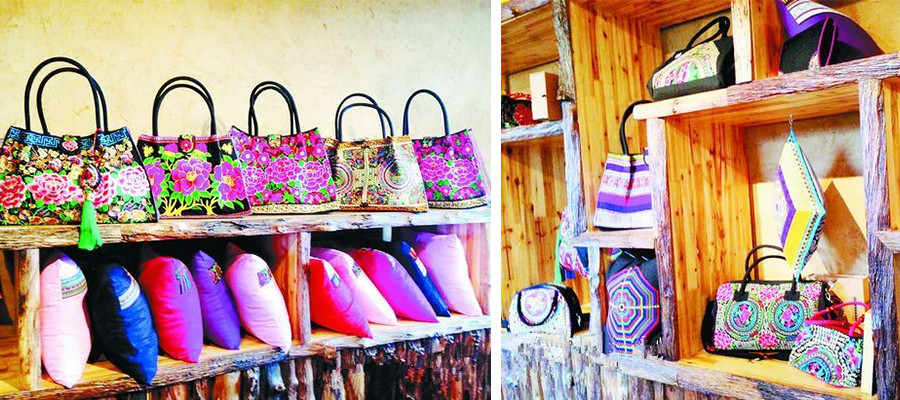
Current Situation of Inheritance
Sani embroidery is a highly complex craft, and the skills required to create it are difficult to learn. In the face of technological advances and machine-produced alternatives, fewer young people are learning traditional handcrafting techniques. As older artisans retire, there is a concern that these traditional skills may be lost.
In the past, items like the Sani flower waistbands were an essential part of a woman’s dowry, but many of these beautiful works have now been lost to time. The increasing influence of external trends has led to a shift in craftsmanship, and traditional Sani embroidery may lose its ethnic and regional character.
http://www.ynich.cn/view-ml-11111-1200.html
Why is Yaoshan Mountain So Special?
On August 9, 2005, the state council approved the establishment of Yaoshan National Nature Reserve. On the right bank of the middle and lower reaches of the grandeurs Jinsha River, there stands a steep and magical mountain. It is the holy mountain in the heart of the local villagers in Qiaojia County of Zhaotong City and it is called Dayao Mountain, which means mountain of herbal medicine. Dayao Mountain is a famous part of the Wumeng Mountain group in Yunnan Province. As a National Nature Reserve, the mysterious Dayao Mountain is named for its rich Chinese herbal medicines. Bestowed with abundance and beauty, it is a home to various birds, animals and wild plants with its fascinating history and culture.
Where is Yaoshan Mountain – Location
Yaoshan mountain is located in Qiaojia county, close to Yaoshan town(药山镇), surrounded by Jinsha river and Niulan river(牛栏江). With an mountain area of 220 square kilometers, Yaoshan Mountain’s main peak is 4042 meters above sea level called Jinding Mountain(轿顶山).
Features of Yaoshan Mountain
Yaoshan mountain lies in the direction from north to east. The western slope is steep, with cliffs rising from the valley where the two rivers meet. The south slope is relatively gentle, which is the main forest area of Yaoshan Mountain Nature Reserve, where the strange and magnificent mountain landscape is concentrated.
From the valley to the top of the mountain, there is an elevation difference of more than 3,500 meters. Due to climate factors, the natural landscapes differ in different parts of the mountain. It is precisely because of “being in this mountain” that the villagers near Dayao Mountain know something about “art of healing”.
Natural Resources of Yaoshan Mountain

Various Plant Resource
The plants at the foot of Yaoshan Mountain are mainly Wumeng fir joined by alpine oak, davidia involucrata, taxus chinensis and arrow bamboo. Many kinds of medicinal species and wildflowers prosper under the canopies of evergreen trees. A variety of rare animals, like practicing Taoists hermits hide in the forest to enjoy freedom. There are 1,406 species of higher plants in the mountain, boasting of plant diversity and rarity, including 172 species of ferns, 17 species of gymnosperms and 1,217 species of angiosperms. Among them, 22 species are national class I or II protected plants. There are 13 species of Chinese endemic plants, such as Cycas panzhihuaensis, Abies lanceolata, Euptelea pleiospermum, Tetracentraceae, Cercidiphyllum japonicum, Cleome viscosa and Meconopsis wumungensis. Meanwhile, Dayao Mountain National Nature Reserve is also the source of type specimens of a variety of plants, such as the reserve’s unique plant Qiaojia Five-needled Pine, as well as other 22 species including Qiaojia Corydalis, Qiaojia Saxifraga stolonifera, Salvia kiaometiensis and Qiaojia Spiraea.
Rich Animal Resources
A variety of animals can propagate freely in Dayao Mountain National Nature Reserve. According to statistics, there are 258 species of wild terrestrial vertebrates in the reserve, belonging to 75 genera, 31 orders and 4 classes. Among them, there are 30 species of nationally protected wild animals such as otters, pangolins, leopards, golden cats, Viverra zibetha, gazelles and musk deer.
Qiaojia Five-needled White Bark Pines(巧家五针白皮松)

Qiaojia Five-needled Pine, also known as the Five-needled White Bark Pine, was discovered in 1992 in Zhangmuqing, Yangjiawan Village, Baihetan Township. It has been classified as a national first-class endangered and protected plant. It is named “Qiaojia Five-needled Pine” because it is only distributed in Qiaojia of all the world.
The bark of pine trees are grayish brown. Compared with ordinary pine trees, white bark pines are more beautiful in shape, and the wood of white bark pines is hard with fine texture, which is easy to process. It is naturally creamy yellow, and is an excellent furniture and building materials. The furnitures made of white bark pines are beautiful and elegant. At present, there are only 34 individual plants of Qiaojia Five-needled Pine in the world, which is the “backbone” species in Yunnan Dayao Mountain National Nature Reserve and known as the “panda” in the plant world.
What to See at Yaoshan Mountain
Rocks on the Hillside
On the hillside stand countless black giant rocks, some of which are themselves mountains. In the company of bamboos, grasses, flowers, butterflies and bees, they stand on the hillside for eternity, as if safeguarding the Dayao Mountain. To express their reverence, the intelligent ancestors of local people attached mysterious legends to these rocks to keep them alive. The most famous legend is about the seven fairies. On the east side of the Dayao Mountain and under the V-shaped slope, there are seven stalagmites on an open land between two cliffs. Their heights vary from three to four meters. They are called the “Seven Fairies”. Looking from afar, they look like seven fairies riding the cloud.
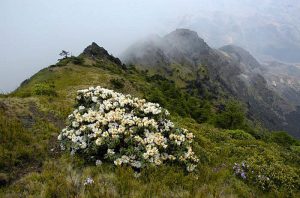
According to legends, seven fairies could not bear the various restrictive rules and the conditioned life in the heaven, and descended to the earth, looking for pleasure. The lofty Dayao Mountain attracted their attention. The blooming flowers, cute animals and beautiful sceneries of the mountain enchanted them to settle down for good for earthly happiness.
Wonderland on the Mountaintop
The gently sloped peak platform of the Dayao Mountain demonstrates wonderful sceneries with dozens of kilometers of strings of meadows, rhodiola, snow tea and azalea of all sizes, with more than 100 glacial lakes dotted in the picturesque mosaic landscape. On the edge areas, meadows are like a paved painting canvas. The beauty of these meadows changes with the season. In spring, the meadows seem reluctant to say goodbye to the winter. They just look bleak and everything is serene. But in summer and autumn, thick meadows promptly come back to life and grow into a grayish green carpet. On the mountain top, wild flowers usually exist in clusters. In the cold winter, frost and snow wither meadows and turn them into silence. The largest two glacial erosion lakes on the mountain, also the most mystic and fascinating ones, are Big Dragon Lake and Small Dragon Lake, three kilometers away from each other. The two lakes are a pair of bright eyes of the Dayao Mountain. They are bright, holy and pure.
How to Get to Yaoshan Mountain

The nearest railway station is Zhaotong station, located in Qingmen village(庆门村), Zhaoyang district, Zhaotong city. The nearest airport is Zhaotong airport, located in Zhaoyang district. The nearest bus station to Yaoshan mountain is Makou station(码口车站), located in Qiaojia county, Zhaotong city.
Best Time to Visit
It’s suitable traveling to Yaoshan Mountain all year round. Especially around the Dragon Boat Festival, not only the scenery in the mountains is charming with azaleas blooming all over the mountainside, the medicinal herbs in the mountain are also in the best shape at this time. Therefore, the villagers will go up the mountain to collect herbs to cure various difficult and complicated diseases, and their prescriptions passed down from generation to generation, becoming a precious treasure of mankind.
Gudang Village Lisu Ethnic Culture Protection Area in Maji Town of Fugong County, Nujiang 福贡县马吉乡古当村傈僳族传统文化保护区

http://www.ynich.cn/view-ml-11111-1189.html
Geographic Location
Dabinlangyuan Village (大槟榔园村) is located in Nanbang Village Committee, Gasa Town (嘎洒镇), Xinping Yi and Dai Autonomous County (新平彝族傣族自治县), Yuxi City (玉溪市), Yunnan Province (云南省). Nestled in the heart of the Ailao Mountains (哀牢山) and the upper reaches of the Honghe River (红河), it is a typical settlement of the Huayao Dai (花腰傣) people. Surrounded by mountains and rivers, with forest coverage exceeding 90%, the village boasts a pristine ecological environment and is praised as a “Huayao Dai Ethnic Ecological Tourism Village”.
History and Heritage
Ethnic Origins
The Huayao Dai (花腰傣) are a branch of the Dai (傣族) ethnic group, who refer to themselves as “Daiyaluo” (傣雅洛), meaning “the laggards in migration.” They are said to be descendants of the ancient Dian Kingdom (滇国), preserving unique traditional clothing, language, and customs.
Village History
Dabinlangyuan Village (大槟榔园村) still retains traditional tuzhangfang (土掌房, earthen flat-roof houses), which account for 86.1% of all village buildings. The community continues to practice ancient techniques in agriculture, weaving, and sugar pressing.
Folk Culture
Traditional Dress
Huayao Dai women wear bright clothing with colorful sashes, silver jewelry, and traditional bamboo baskets (yangluo)—their attire is both vibrant and intricate. Men wear black button-up jackets and long trousers.
Festivals
- Huajie Festival (花街节): Celebrated on the first Ox day of the second lunar month, it features beauty contests, love songs, and courtship rituals. Often referred to as the “Oriental Valentine’s Day”.
- Dragon Tree and Village Spirit Worship: Nine sacrificial ceremonies are held annually to pray for good weather and harvests.
Traditional Practices
- Bamboo weaving and traditional red sugar pressing methods are still preserved.
- Teeth dyeing (for girls aged 13–17) and tattooing (practiced by both men and women) remain important customs.
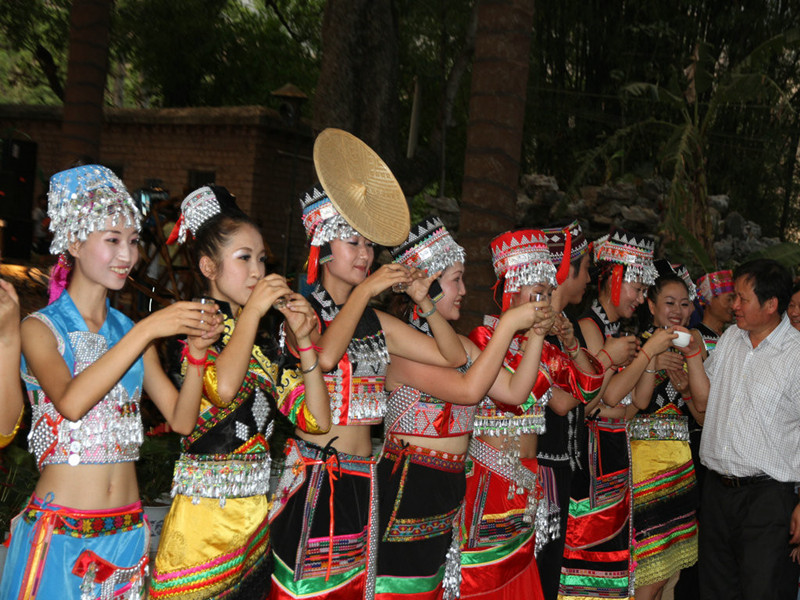
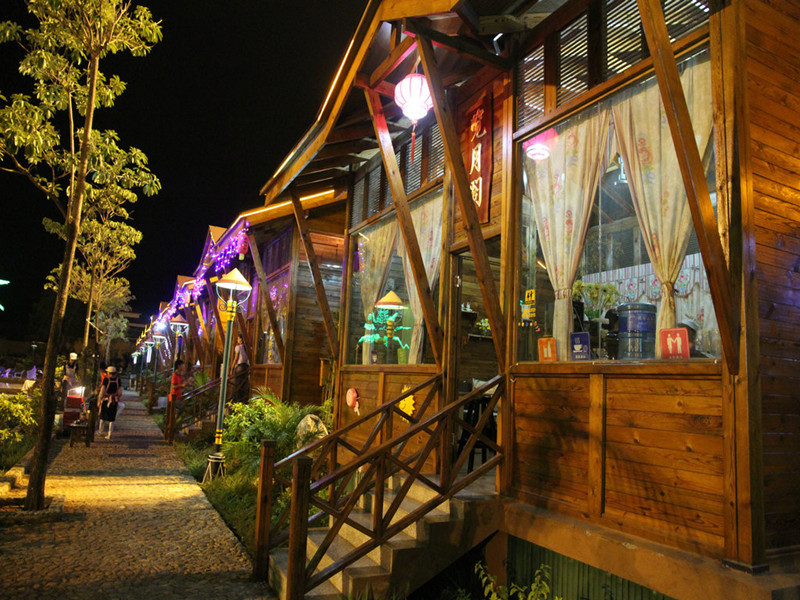
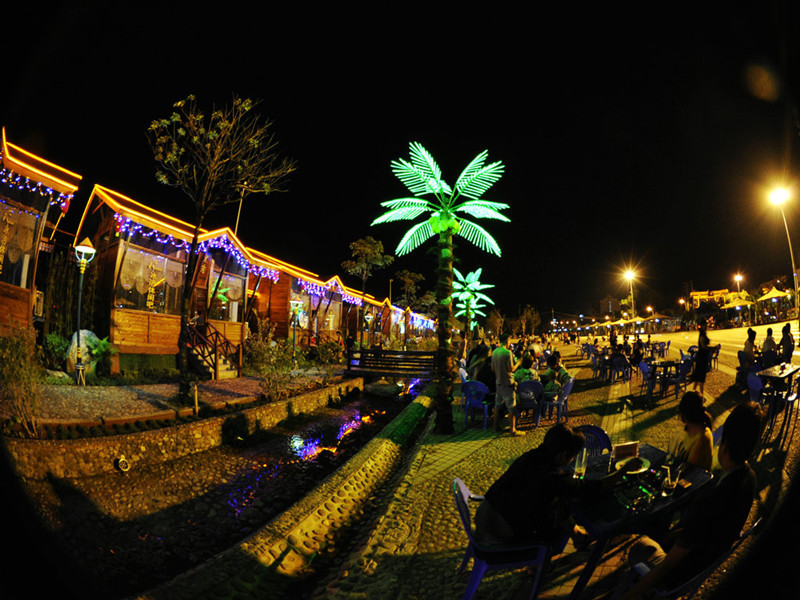
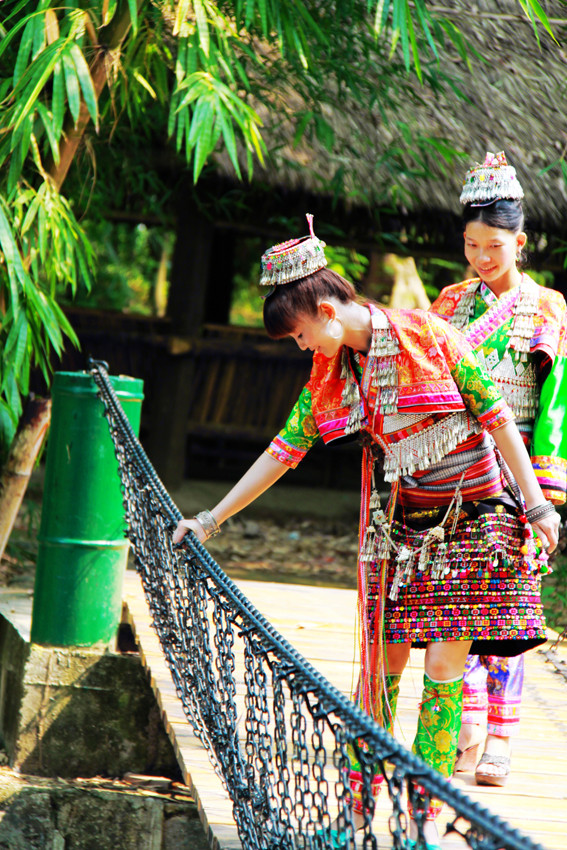
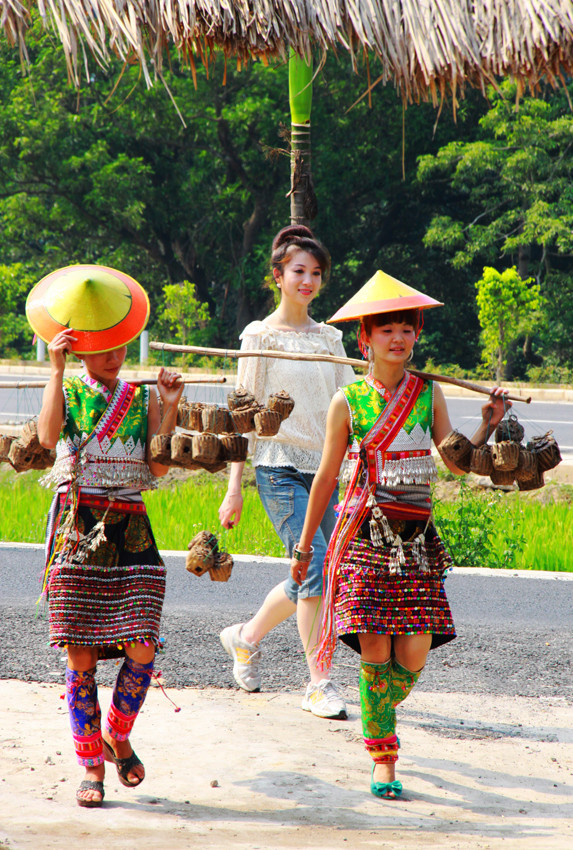
Weather and Best Time to Visit
Climate
Subtropical climate with warm temperatures year-round. The average annual temperature ranges from 18°C to 22°C with abundant rainfall.
Best Seasons to Visit
- February–March: During the Huajie Festival, offering the most immersive cultural experience.
- September–November: Harvest season with golden terraced fields—ideal for photography.
Recommended Attractions and Visit Duration
| Attraction | Highlights | Suggested Duration |
|---|---|---|
| Dabinlangyuan Village (大槟榔园村寨) | Traditional earthen houses, Huayao Dai dance performances | 2–3 hours |
| Huayao Rural Culture Village (花腰田间民俗文化村, AAA Scenic Area) | Pottery and Dai embroidery workshops, agricultural culture displays | 3–4 hours |
| Shimen Gorge of Ailao Mountains (哀牢山石门峡) | Waterfalls, primeval forest, streams | 2 hours |
| Nan’en Waterfall (南恩瀑布) | Iconic waterfall of the Ailao Mountains | 1 hour |
Transportation
Self-Drive
Kunming → Xinping (approx. 3 hours) → Gasa Town (1 hour) → Dabinlangyuan Village (15 minutes)
Public Transportation
Take a long-distance bus from Kunming South Bus Station to Xinping, then transfer to a local bus to Gasa Town.
Food Recommendations
- Gasa Beef Hot Pot (戛洒牛汤锅): A traditional mule caravan delicacy, served with dipping sauces and yellow rice.
- Dry Eel and Pickled Duck Eggs: Classic Huayao Dai bar snacks.
- Boiled Pickled Meat with Panzhihua Flowers (攀枝花煮腌肉): A seasonal wild vegetable dish.
Shopping Recommendations
- Colorful Huayao Sashes (花腰带) and Dai Brocade (傣锦): Handmade textiles with vibrant patterns.
- Brown Sugar and Traditional Pottery (土陶): Local handcrafted products.
Accommodation Recommendations
- Huayao Rural Homestay (花腰田间民宿): Styled as traditional tuzhangfang, offering immersive experiences.
- Hotels in Gasa Town: Budget options such as Huajie Hotel (花街酒店).
Travel Tips
- Respect Local Customs: Remain quiet during sacrificial ceremonies.
- Clothing: Lightwear for summer, warm clothing for winter due to large temperature differences between day and night in the mountains.
Recommended Itinerary (from smallest to largest destination)
- Half-Day: Dabinlangyuan Village → Huayao Rural Culture Village
- Full-Day: Shimen Gorge + Nan’en Waterfall
- Return Route: Gasa Town → Xinping County → Kunming
Dabinlangyuan Village (大槟榔园村) is a living museum of Huayao Dai (花腰傣) culture. Here, you can immerse yourself in authentic Dai traditions, experience rural lifestyles, and savor local mule caravan cuisine. Whether you’re drawn to festive celebrations or serene countryside strolls, this destination offers an unforgettable ethnic journey through Yunnan.
For Chinese version please go to:
http://www.ynich.cn/view-ml-11111-1190.html
Remeicuo Song and Dance of Dadong Naxi Ethnic Minority in Lijiang
Hot Me Cuo is an ancient collective dance and song form of the Naxi people, passed down in Da Dong Township (大东乡) in the northeastern part of Gucheng District...
Hulusi ( Cucurbit Flute) of Lianghe County, Dehong
Hulusi ( Cucurbit Flute) of Lianghe County, Dehong 梁河县葫芦丝 http://www.ynich.cn/view-ml-11111-1205.html...
Ruili City – Hometown of Peacock Dance
Ruili City – Hometown of Peacock Dance 瑞丽市孔雀舞之乡 http://www.ynich.cn/view-ml-11111-1206.html...
Zhuang Opera in Funing County, Wenshan
Funing Zhuang Opera is a unique traditional theatrical form originating from (富宁县) Funing County in (文山州) Wenshan Prefecture, Yunnan Province, and is recognized as a national intangible cultural heritage....
Bronze Drum Dance in Guangnan County, Wenshan
The Bronze Drum Dance (文山壮族、彝族铜鼓舞) is a traditional dance form from the Wenshan Zhuang and Miao Autonomous Prefecture (文山壮族苗族自治州) in Yunnan Province, recognized as one of China’s National-Level Intangible...
Guardian of Baima Snow Mountain in NW Yunnan
The news was updated on May 22, 2019. Quzonggong, literally a place where two rivers meet, is located in the northernmost area of Baima Snow Mountain National Nature Reserve...
Laohusheng Dance of Yi Ethnic Minority in Shuangbai County, Chuxiong
Laohusheng Dance of Yi Ethnic Minority in Shuangbai County, Chuxiong 双柏县彝族老虎笙舞 Laohusheng Dance: Tiger Dance Festival of Yi Ethnic Minority http://www.ynich.cn/view-ml-11111-1203.html...
Yanglao Drum Dance of Yi Ethnic Minority in Jinning District, Kunming
Introduction to Yanglao Drum Dance The Yanglao Drum Dance (秧老鼓舞), a traditional performance form originating in Jinning District (晋宁县), Kunming (昆明), is a significant cultural symbol of the Yi...
Embroidery of Azhuodi Yi Ethnic Minority (Sani People) in Shilin County, Kunming
Overview of Yi (Sani) Embroidery Yi (Sani) embroidery, also known as “Sani Cross-Stitch” or “Sani Tiao Hua” (撒尼挑花), is a folk embroidery art that originates from the Sani people...
Yaoshan Mountain in Qiaojia County, Zhaotong
Why is Yaoshan Mountain So Special? On August 9, 2005, the state council approved the establishment of Yaoshan National Nature Reserve. On the right bank of the middle and...
Gudang Village Lisu Ethnic Culture Protection Area in Maji Town of Fugong County, Nujiang
Gudang Village Lisu Ethnic Culture Protection Area in Maji Town of Fugong County, Nujiang 福贡县马吉乡古当村傈僳族传统文化保护区 http://www.ynich.cn/view-ml-11111-1189.html...
Dabinglangyuan Village Dai (Huayao Dai) Ethnic Culture Protection Area in Gasa Town of Xinping County, Yuxi
Geographic Location Dabinlangyuan Village (大槟榔园村) is located in Nanbang Village Committee, Gasa Town (嘎洒镇), Xinping Yi and Dai Autonomous County (新平彝族傣族自治县), Yuxi City (玉溪市), Yunnan Province (云南省). Nestled in...
Tips Before Travel
Bring copies of your passport
Don't assume you're restricted to the main hubs of Beijing and Shanghai, our tours can start from any city.
Register with your embassy
For your safety, please register with the Embassy.
Always have local cash
Exchange some local currency for your trip
Our Team
Customize a Trip
Start planning your tailor-made holiday to China by contacting one of our specialists. Once enquired, you’ll get a response within 0.5~23.5 hours.























